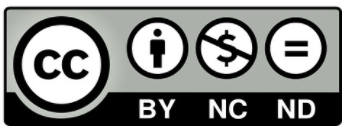Method according to Spinoza’s TIE: a Reconsideration of Harold Joachim’s Circularity
DOI:
https://doi.org/10.53382/issn.2735-6140.21Keywords:
Spinoza, verdad, método, definición genética, criterio de la verdadAbstract
In this paper I aim to reconsider and develop an objection posited by Harold Joachim to the conception of method developed by Spinoza in the TIE. In particular, the circularity in which Spinoza is guilty when he determines which is the best type of perception. I will show that this objection is sound if we notice that, given that the method must start with a given true idea, the implementation of method depends on the previous best type of perception choice. And, given the priority of the definition, Spinoza can’t decide which type of perception is the best without assuming at the very beginning what is the nature of the understanding, but this knowledge is exactly what the implementation of method seeks to achieve. I will finish this paper with a distinction between two ways of understanding the implementation of method (one static and other dynamic), being just one of them open to Joachim’s objection.
Downloads
References
Curley, Edwin. “Spinoza on Truth”, Australasian Journal of Philosophy 72 /1 (1994): 1−16.
Della Rocca, Michael. “The Power of an Idea: Spinoza’s Critique of Pure Will”, Nous 37/2 (2003): 200–231.
Dijn, Herman de. Spinoza. The Way to Wisdom. Indiana: Purdue University Press, 1996.
Garrett, Aaron. Meaning in Spinoza’s Method. New York: Cambridge University Press, 2003.
Garrett, Don. “Truth and Ideas of Imagination in the Tractatus de Intellectus Emendatione”. 1986. Nature and Necessity in Spinoza’s Philosophy. New York: Oxford University Press, 2018. 151–175.
Hegel, G.W.F. Phänomenologie des Geistes, ed. Hans-Friedrich Wessels & Heinrich Clairmont. Hamburg: Feliz Meiner Verlag, 1988.
Joachim, Harold H. Spinoza’s Tractatus de Intellectus Emendatione. A Commentary. London: Oxford University Press, 1958.
Mark, Thomas Carson. Spinoza’s Theory of Truth. New York: Columbia University Press, 1972.
Morrison, John. “Truth in the Emendation”. The Young Spinoza. A Metaphysician in the Making, ed. Yitzhak Melamed. New York: Oxford University Press, 2015. 66–91.
Nadler, Steven. Spinoza’s Ethics. An Introduction. New York: Cambridge University Press, 2006.
Nelson, Alan. “The Problem of True Ideas in Spinoza’s Treatise on the Emendation of the Intellect”. The Young Spinoza. A Metaphysician in the Making, ed. Yitzhak Melamed. New York: Oxford University Press, 2015. 52–65.
Nesher, Dan. “Spinoza’s Theory of Truth”. Spinoza. The Enduring Questions, ed. Graeme Hunter. Toronto: University of Toronto Press, 1994. 140–177.
Renz, Ursula. The Explainability of Experience. Realism and Subjectivity in Spinoza’s Theory of the Human Mind. New York: Oxford University Press, 2018.
Schmid, Stephan. “Wahrheit und Adäquatheit bei Spinoza”, Zeitschrift für philosophische Forschung 62/2 (2008): 209–232.
Sepúlveda, Esteban. “Método de ejecución y criterio interno de la verdad en la Fenomenología del Espíritu”, Síntesis, 3/2 (2020): 60–81.
Spinoza, Baruch. Correspondencia, trad. Atilano Domínguez. Madrid: Guillermo Escolar, 2020.
Spinoza, Baruch. Ética demostrada según el Orden Geométrico, trad. Atilano Domínguez. Madrid: Guillermo Escolar, 2019.
Spinoza, Baruch. Pensamientos Metafísicos, trad. Atilano Domínguez. Madrid: Alianza, 2014.
Spinoza, Baruch. Tratado de la Reforma del Entendimiento, trad. Luis Placencia y Boris Eremiev. Buenos Aires: Colihue, 2008.
Downloads
Published
Issue
Section
License
Copyright (c) 2023 Esteban Caro Sepúlveda

This work is licensed under a Creative Commons Attribution-NonCommercial-NoDerivatives 4.0 International License.






